The Sony alpha 7 Mark II (aka a7RII) has a silent shutter mode. When running silent, the mechanical shutter is on vacation: the sensor does all the work. The mechanical shutter is a rabbit, completing an exposure in 1/250 second (for shutter speeds faster than that, a slit moves across the sensor, but it takes the slit a little under those 4 milliseconds to make its journey). The fully electronic shutter is a tortoise, taking longer to do its job.
How much longer? I thought I’d find out.
I set up an analog oscilloscope with an input from a function generator. If you’re going to try this at home, don’t try it with a digital scope; it won’t work. I set the time base to 1 msec/division, and the amplitude of the generator to just over the maximum excursion for the scope’s vertical sensitivity. I mounted a 100mm f/2 Zeiss Makro-Planar on the a7RII with a Kipon adapter. I put the RRS plate on the camera and clipped it into a Arca Swiss C1 head on a Gitzo tripod. I set the camera for electronic first curtain shutter, with silent shutter off. I set the camera to manual exposure, and the shutter speed to 1/500 second – that’s two msec. I stopped down a bit and cranked up the ISO to 1600 to get a good exposure.
I took a picture:
Consider the bright part of the trace. If you do that, you can see that it’s about two divisions wide. One division is 1 msec, and we set the shutter to 2 msec, and twice one is two. Isn’t it nice how that worked out? Now notice that the bright part of the image is not vertically oriented, as it would be if every part of the image was exposed in the same 1/500 second. It’s diagonal. Since scope traces from left to right, the fact that the top of the diagonal is left of the bottom means that the shutter exposed the top of the image before it exposed the bottom. Since the image is upside down on the sensor, that means that the a7RII’s mechanical shutter must move from the bottom of the camera to the top.
Also note that the lines are slightly curved, indicating that the trailing curtain increases its speed as it moves across the image plane, and the electronic leading curtain performs an approximation of that behavior, even though its inertia is presumably zero.
We can also look at the picture and tell how long the shutter took to go from the bottom of the camera to the top. If we run a line parallel to the diagonal and extend it to the top and bottom of the image like so:
We can see that it takes the shutter a little over three divisions to go from the bottom of the camera to the top. That’s 3 plus msec, and the synch speed is 1/250 second, or 4 msec. Looks like the Sony engineers put a little wiggle room in there.
Now, let’s change the time base to 10 milliseconds per division (10 msec/div), and take another picture:
Makes the mechanical shutter look pretty fast, doesn’t it? Leaving the time base and the exposure time the same, what happens when we turn on the silent shutter?
A lot slower. How fast is it? Let’s put in our construction line:
About 7 divisions, or 70 msec. The silent shutter takes 1/14 of a second to complete its travel across the sensor. That’s a lot slower than the a7S’s 1/30 second.
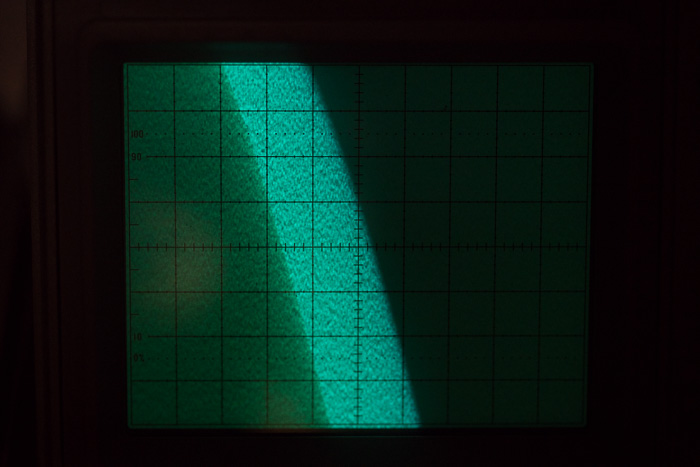
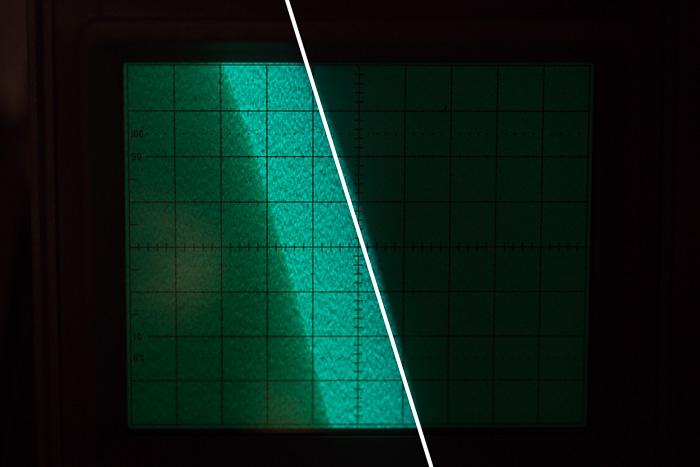
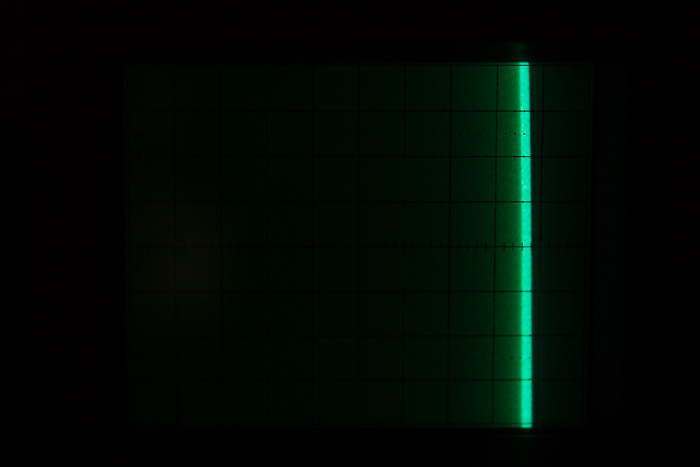
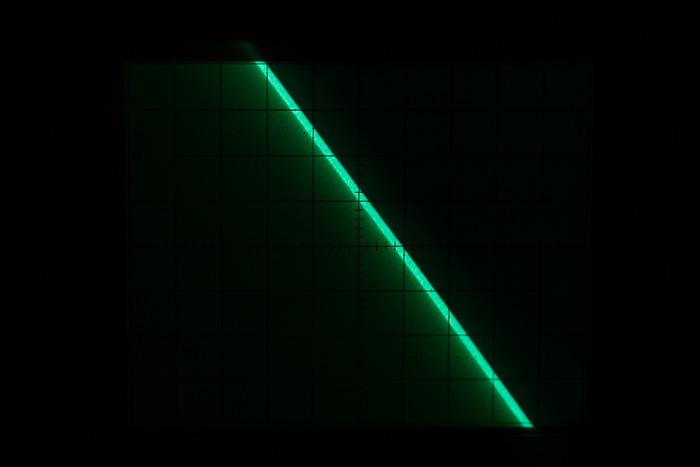
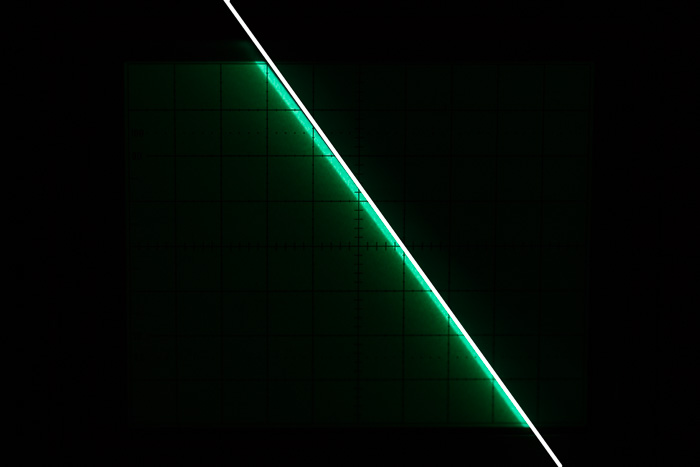
Toh says
Hi Jim – Fantastic way of engineering an empirical measurement! If I may ask two questions:
1) Did you test the fully mechanical shutter? Any reason to believe it’s faster than 4ms?
2) It’s been about 15 years since I played with an oscilloscope so could you please remind us what function you were generating? I’m trying to picture it in my head but am getting confused on what’s intended function vs. what’s the phosphors just saying lit (if it’s an analog device).
Jim says
The fully mechanical shutter has the same timing as EFCS.
The scope’s vertical input is a fairly high frequency triangle wave to paint a vertical bar on the screen at any time. The time base is set as indicated. Thus the scope serves as a precise target for the camera, letting you see what part of the sensor is exposed at any time during the over all transit time of the shutter.
Jim
Jimmy says
Jim, could you please explain more about how to count to eight divisions in the last picture? To me, it seems like about six ( I count it from left to right) Thanks!
Jim says
Now that you mention it, I get a shade over 7. When you do the counting, be sure to follow the construction line all the way to the top and bottom of the frame.I’ll fix the post.
Jim